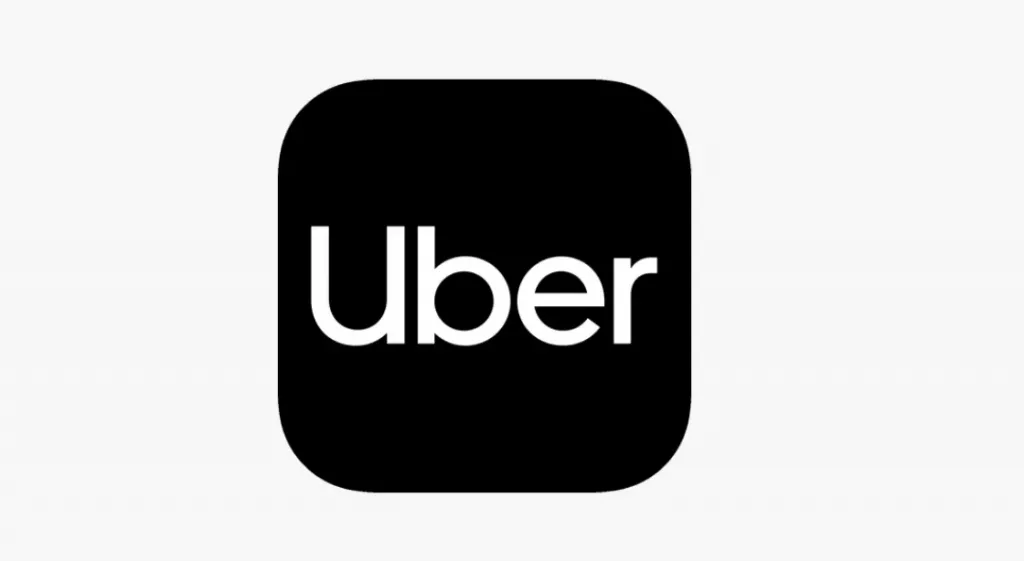Developing a mobile app is more than just creating an attractive user interface; the real skill lies in its backend architecture, which significantly impacts the app’s performance, scalability, and user experience. By exploring the benefits of backend development, such as improved information sharing and accelerated development processes, as well as important features, such as push notifications and user authentication, this article aims to provide developers with the knowledge to build robust and efficient backend environments for mobile apps. Join us to learn about the tools, best practices, and types of apps that need or can benefit from a backend framework.
- Backend development enhances mobile apps with features like user authentication, data storage, push notifications, and API integrations, leading to improved user experiences, engagement, and personalization.
- Mobile app backend architecture comprises the client-side app, backend server, and database. The server-working process involves handling requests, processing data, and optimizing server resources for performance.
- Backend development relies on components like server-side languages (e.g., PHP, Python), frameworks (e.g., Node.js), databases (e.g., PostgreSQL), and cloud platforms (e.g., AWS). It offers benefits like scalability, data management, security, improved user experiences, and cost-effectiveness.
What is a backend for a mobile app?
The mobile app backend refers to the server-side components essential for supporting the operational needs of a mobile application. The unseen engine powers the app, allowing for data storage, user authentication, and inter-system communications. Mobile app backend development crafts this robust foundation, enabling apps to deliver dynamic content, personalized user experiences, and real-time data synchronization. Developers can integrate various mobile app backend services such as databases, APIs, and cloud storage through backend mobile app technologies, ensuring the app remains responsive, scalable, and secure. This infrastructure is pivotal for apps to function beyond basic offline capabilities, supporting complex processes and user interactions.

What are the Types of Mobile App Backends?
Diving into mobile app backend development, it’s essential to grasp the variety of mobile app backends available. Each type provides distinct mobile app backend services, shaping the functionality and performance of the backend mobile app experience.
Third-Party SaaS
Third-party SaaS for mobile app backend streamlines mobile app backend development by offering hosted solutions. This mobile app backend model is user-friendly, enabling rapid deployment with minimal setup. However, tailoring a backend mobile app to specific needs often necessitates combining several mobile app backend services from different SaaS providers. Although convenient, finding a single SaaS solution that meets all requirements is challenging, prompting developers to integrate multiple services for comprehensive functionality.
MBaaS Solutions
MBaaS Solutions revolutionize mobile app backend development by automating server-side tasks and managing cloud infrastructure. This approach enhances mobile app backend services with user management, notifications, and social integrations, simplifying the development process. MBaaS allows developers to concentrate on crafting the user interface, significantly reducing complexity and maintenance efforts. Offering APIs and SDKs, MBaaS solutions expedite development, cut costs, and let developers focus on app innovation rather than backend mobile app intricacies.
Custom Backend
Custom Backend represents the pinnacle of flexibility in development, granting unparalleled control over mobile app backend services. Although developing a custom backend for your mobile app is time-consuming and costly, it provides a tailored solution unmatched by SaaS or MBaaS options. This approach demands a dedicated development team responsible for the backend’s performance and security. Custom backends, built with frameworks like Django or Express.js, offer the freedom to implement unique functionalities, setting a high standard for backend mobile app excellence.
Advantages of Backend Development
Delving into mobile app backend development unveils significant benefits. Mobile app backend enhancements elevate mobile app backend services and refine the overall backend mobile app experience. These advantages underscore the pivotal role of backend development in crafting superior mobile applications.
- Better Information Exchange
Better Information Exchange in mobile app backend development ensures seamless communication between the app’s components. A robust mobile app backend facilitates efficient data flow, enhancing internal and external interactions. This leads to a backend mobile app environment where information exchange is optimized, supporting dynamic mobile app backend services that adapt to user needs and actions in real time, ensuring a responsive and engaging user experience.
- Accelerated Development Process
Accelerated Development Process is a hallmark of effective mobile app backend development. By streamlining backend processes, developers can focus on delivering features faster. A well-structured mobile app backend reduces complexities, enabling quicker iterations and deployment. This acceleration in the backend mobile app creation phase shortens the time to market and allows for more agile responses to user feedback and market demands.
- Better Frontend Functionality
Better Frontend Functionality directly benefits from advanced mobile app backend development. A powerful mobile app backend equips the front end with many functionalities, from complex calculations to data management, without burdening the client side. This symbiosis between the backend mobile app and its front end ensures a smoother, more intuitive user interface enriched with mobile app backend services that perform flawlessly across devices.
- Improved App Performance
Improved App Performance is a critical advantage of sophisticated mobile app backend development. The mobile app backend is the engine that processes user inputs and retrieves data swiftly, ensuring that the application responds promptly to user interactions. Enhanced backend mobile app strategies lead to optimized performance, minimizing latency, and maximizing efficiency. This optimization ensures that users enjoy a fast, reliable experience underpinned by mobile app backend services designed for peak performance.
Basic features for mobile app backend development
Exploring the basic features for mobile app backend development reveals the backbone of mobile app backend services. These features ensure backend mobile app functionalities meet user expectations, enhancing the overall mobile app backend experience.
- Push Notifications
Push Notifications enhance mobile app backend development engagement by keeping users connected and updated. Developers can send timely, relevant alerts through mobile app backend services that boost app retention and usage. The backend mobile app structure supports customizable notification settings, ensuring messages meet user preferences and avoid overload, which could otherwise prompt app uninstalls.
- User Authentication
User Authentication safeguards access to user accounts and personal data within mobile app backend services. Employing various authentication strategies, such as social logins or biometric scans, enhances security within the backend mobile app. This feature ensures that only authorized users gain access, preserving data integrity and fostering user confidence in the app’s protection measures.
- Integration of a Payment Gateway
Integration of a Payment Gateway facilitates secure and efficient financial transactions in mobile app backend development. Ensuring the safe handling of sensitive payment information through encryption and secure storage is paramount in mobile app backend services. This capability within the backend mobile app elevates user trust and streamlines the purchasing process, highlighting the backend’s role in supporting smooth and secure payment transactions.
What Type of Apps Require Backend Development?
Exploring the variety of applications that require mobile app backend development reveals a broad spectrum of needs, from enhancing user experiences to enabling complex functionalities. This discussion will delve into the types of apps that leverage backend mobile app technologies, highlighting how mobile app backend services support diverse objectives and add value to different app categories, thereby underscoring the diverse applications of mobile app backend frameworks.
Netflix

Netflix relies heavily on sophisticated mobile app backend development to stream movies and TV series seamlessly across devices. The mobile app backend is crucial for managing vast libraries, ensuring updated content, and providing personalized recommendations. Furthermore, the backend mobile app infrastructure supports user account management, including login sessions and subscription plans. The efficiency of mobile app backend services enables Netflix to deliver content globally without delay, making it a prime example of the necessity for robust backend systems in entertainment apps.
Amazon

Amazon’s success as an online marketplace hinges on its robust mobile app backend development, which manages an extensive product catalog. This mobile app backend ensures products are easily added, updated, or removed, facilitating a dynamic shopping experience. The backend mobile app handles user transactions, account management, and personalized recommendations. Efficient mobile app backend services are vital for Amazon to process millions of transactions securely and provide a seamless user experience, demonstrating the backend’s role in e-commerce platforms.
Uber

Uber’s operation as a digital taxi service is powered by advanced mobile app backend development. This mobile app backend efficiently manages real-time data on available cars, facilitating quick matches between drivers and riders. The backend mobile app also processes ride requests, cancellations, and payments. The integrity of mobile app backend services ensures Uber users have a reliable, efficient, and secure experience, illustrating the critical role of backend systems in service-oriented mobile apps.
What Type of Apps Doesn’t Require a Backend?
Not every application demands the complexities of mobile app backend development. Certain apps thrive on minimalism, utilizing straightforward functions that require no backend mobile app infrastructure, offering users an uncomplicated experience without the need for mobile app backend services.
Calculator
Calculator apps epitomize standalone functionalities that negate the need for a mobile app backend. These utilities, inherently available on most devices, facilitate straightforward arithmetic operations without external dependencies. The efficiency and immediacy of calculations are ensured by local processing, circumventing the need for mobile app backend services. The absence of a backend mobile app infrastructure underscores Calculator apps’ direct and uncomplicated nature, making them quintessential tools for quick mathematical tasks without the complexities involved in mobile app backend development.
Voice Recorder
Voice Recorder applications demonstrate the feasibility of operating autonomously without a mobile app backend. Built into many devices, they leverage internal microphones to capture audio and store files directly on the device. This operation model bypasses the necessity for mobile app backend services, streamlining the user experience. The direct, backend mobile app-independent approach ensures recordings are promptly accessible, highlighting the utility of Voice Recorder apps for straightforward audio capture without the intricacies of mobile app backend development.
Measure
Measure apps, available by default on certain platforms, utilize device cameras to estimate dimensions, functioning entirely without a mobile app backend. This direct measurement capability, requiring no mobile app backend services, emphasizes the app’s reliance on built-in hardware rather than backend mobile app solutions. The simplicity and immediacy of obtaining measurements without needing mobile app backend development illustrate the practicality and convenience of Measure apps for quick, on-the-go dimensioning tasks.
Camera
Camera applications are intrinsic to smartphones, offering photography and videography capabilities without necessitating a mobile app backend. These apps process and store media locally, avoiding dependency on mobile app backend services. The independence from a backend mobile app structure allows for instant access to captured moments. Despite some advanced features potentially leveraging mobile app backend development for enhanced functionalities like cloud backup or GPS tagging, the core operations of Camera apps remain predominantly mobile app backend-independent, emphasizing their utility for immediate image and video capture.
Do you need a team for the mobile app development?
Contact usTools Used in Mobile App Backend Development
Selecting the right tools for mobile app backend development can significantly influence efficiency, scalability, and functionality.
1. Apache Tomcat
Apache Tomcat is a pivotal mobile app development tool, facilitating mobile app backend services with robust features like cross-site request forgery attack prevention, memory leak detection, and static content storage via aliases. It supports servlet 3.0, JSP 2.2, and EL 2.2, enhancing backend mobile app efficiency with asynchronous logging and ensuring applications run smoothly and securely.
2. NGINX
NGINX enhances mobile app backend development by offering reverse proxy capabilities with caching, IPv6, load balancing, FastCGI support with caching, and WebSockets. Its TLS/SSL with SNI support makes it a go-to for secure, high-performance mobile app backend services, optimizing backend mobile app operations for speed and reliability.
3. NodeJS
NodeJS revolutionizes mobile app backend development with its asynchronous, event-driven architecture, making mobile app backend services highly scalable despite being single-threaded. Its efficient, non-buffering operation and open license policy enhance backend mobile app performance, catering to modern mobile app backend needs with agility.
4. Oracle RDBMS
Oracle RDBMS stands out in mobile app backend development for its comprehensive SQL and PL/SQL support, heterogeneous replication, result set support, and advanced data types. Its two-phase commit protocol ensures reliable transaction management for backend mobile app projects, solidifying mobile app backend services with robust database management capabilities.
5. IBM DB2
IBM DB2 offers advanced app protection, continuous availability, and automated mobile app backend development administration, supporting multiple data types and languages. These features contribute to a secure and efficient environment for backend mobile app operations, enhancing mobile app backend services with reliable data management solutions.
6. MySQL
MySQL, an open-source database, is crucial for mobile app backend development, efficiently storing data and supporting large databases. Its secure interface and encryption safeguard mobile app backend services, making it an optimal choice for backend mobile app projects requiring efficiency and security for vast amounts of records.
7. Microsoft Access
Microsoft Access simplifies mobile app backend development with user-friendly features, easy data import/export, and readymade templates for web database publishing. These advantages make it an accessible tool for mobile app backend services, streamlining backend mobile app projects with efficient data management and publishing capabilities.
8. PostgreSQL
PostgreSQL offers many data types, data integrity compatibility, extensibility, and internationalization for mobile app backend development. Its robust features support complex mobile app backend services, ensuring backend mobile app projects benefit from advanced data handling and search capabilities, making it a versatile database solution.
Best Practices to Use in Backend for Mobile App Development
Focusing on scalability, security, flexibility, and maintenance is critical for optimal performance and user satisfaction in mobile app backend development.
- Scalability
Scalability is essential for mobile app backend development, enabling the system to effectively manage growing user numbers and data volumes. Adopting a scalable architecture allows adding resources, such as servers, to accommodate increased demand. Techniques like caching and database optimization play critical roles in enhancing performance. Ensuring the mobile app backend can scale horizontally is crucial for maintaining responsiveness and user satisfaction, even during peak usage. Scalability supports the mobile app backend in adapting to user growth seamlessly, ensuring long-term sustainability and efficiency.
- Security
Security within mobile app backend development involves implementing robust measures to protect data and user privacy. Encryption, secure access controls, and regular security audits are fundamental to thwarting potential breaches. Two-factor authentication and stringent access management help safeguard sensitive information against unauthorized access. Keeping the mobile app backend updated with the latest security patches is paramount in defending against evolving threats. A secure mobile app backend protects user data and reinforces trust in the mobile application.
- Flexibility
Mobile app backend development flexibility ensures the system’s adaptability to changes and new requirements. Employing a microservices architecture facilitates the independent development, deployment, and scaling of system components. This approach enhances the mobile app backend’s ability to incorporate new features or technologies without significant overhauls. Adhering to industry-standard protocols and APIs further ensures compatibility and ease of integration with other systems and services. A flexible mobile app backend allows continuous improvement and innovation, keeping the application relevant and competitive.
- Maintenance
Maintenance is a continuous requirement for mobile app backend development, involving regular updates, bug fixes, and system optimizations. Proactive monitoring and maintenance practices help identify and address issues before they impact users. Keeping the mobile app backend up to date ensures optimal performance and security while facilitating the integration of new features. Regular maintenance activities are crucial for sustaining the mobile app backend’s reliability and performance, leading to a better user experience and higher satisfaction levels.
Final words
Understanding and implementing a robust mobile app backend is not just an option; it’s necessary for your app’s smooth operation and scalability. Good backend development practices allow mobile apps to manage large amounts of data, maintain performance under load, and secure user transactions. With the advancement of technology, developers now have a wide range of backend services for mobile applications, allowing them to create customized backend solutions that meet specific application needs and user expectations.
Ficus Technologies specializes in mobile application backend development, offering customized solutions that enhance your mobile application’s functionality and user experience. Whether you’re integrating an advanced backend service for a medical app, ensuring secure and efficient patient data management, or developing a mobile app for a real estate platform that requires real-time listings and customer communication features, Ficus Technologies has the expertise you need to enhance your mobile app.
A web application’s front and back end represent two fundamental aspects of its development. The front end, or client-side, is the part of the application that users interact with directly. It directly includes everything the user experiences: text, images, buttons, and navigation, built using technologies like HTML, CSS, and JavaScript. The backend, or server-side, operates behind the scenes and manages and serves the application’s data to the front end. It encompasses servers, databases, and server-side applications that handle business logic, data storage, and application security. The front end is about user experience, while the back end focuses on functionality and data management.
Identifying the “fastest” backend language can be challenging as performance depends on various factors, including the specific task, the efficiency of the code, and the environment in which it’s run. However, languages compiled to machine code, like C++ and Rust, are often cited for speed and efficiency. For web development, however, languages like Go (Golang) are known for their impressive speed and concurrency model, making them highly efficient for backend services. Node.js, while not a language but a runtime environment for JavaScript, also stands out for its non-blocking I/O model, enabling high performance for certain web applications.









This concise guide delves into the significance of mobile app backend development, emphasizing its pivotal role in enhancing user experiences. It briefly outlines the functions enabled by backend development, such as user authentication and API integrations, promoting engagement and personalization. The breakdown of backend architecture and server processes adds clarity, while the benefits of scalability, data management, security, user experience, and cost-effectiveness underscore its indispensable role. Ficus Technologies’ expertise in this domain further solidifies the article’s insights.
Mobile app backend development takes center stage in this informative article, emphasizing its crucial contributions to user experiences. The article adeptly explores functions empowered by backend development, such as user authentication and API integrations, fostering engagement and customization. Furthermore, the breakdown of backend architecture and server processes clarifies its role, highlighting scalability, data management, security, user experience, and cost-effectiveness as compelling advantages.